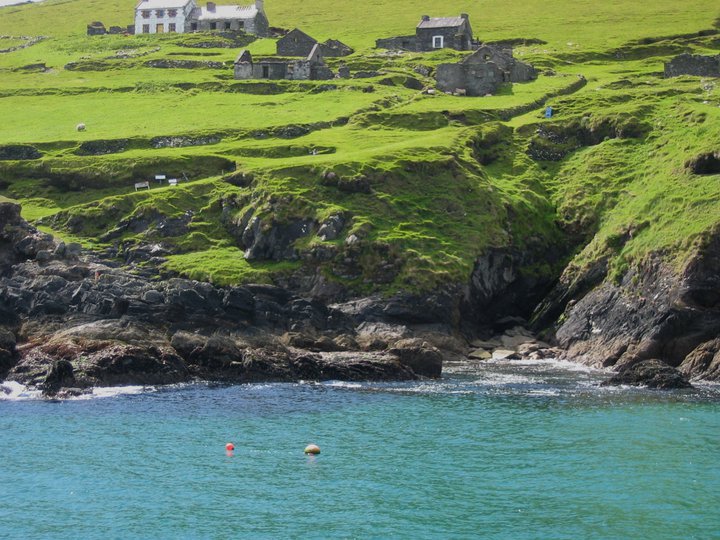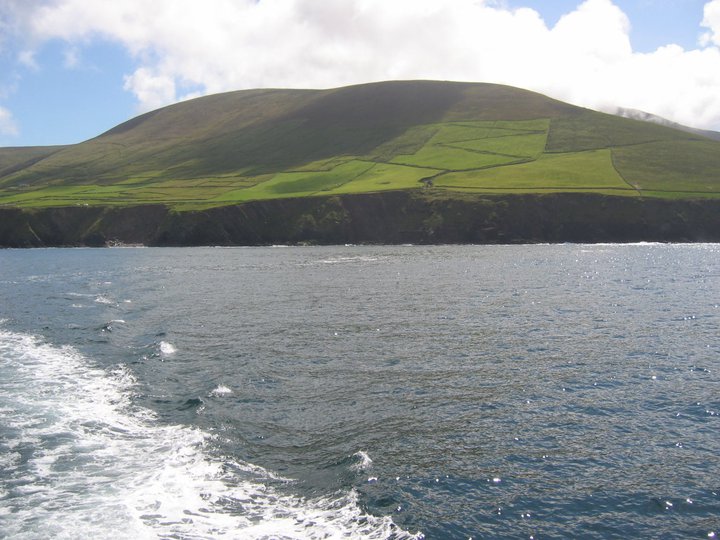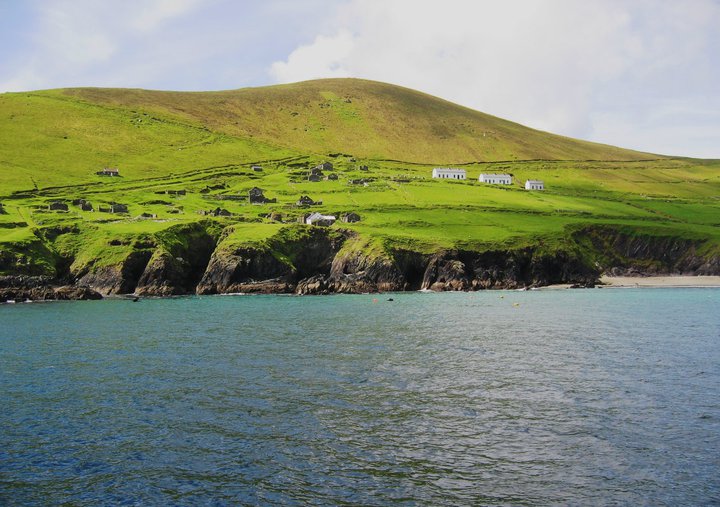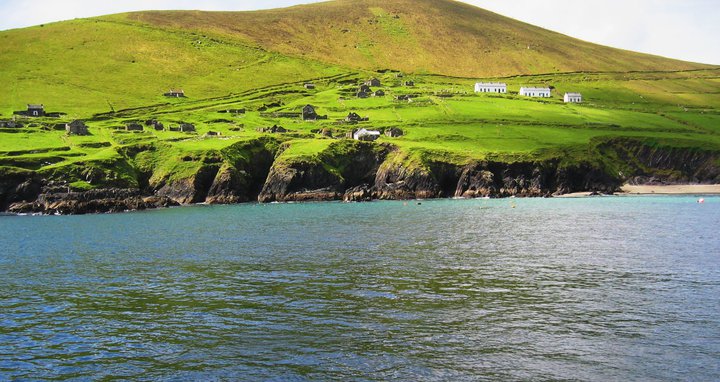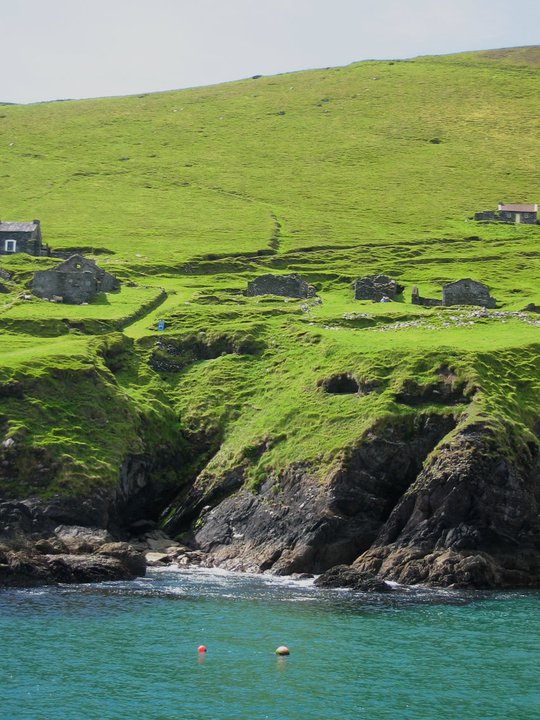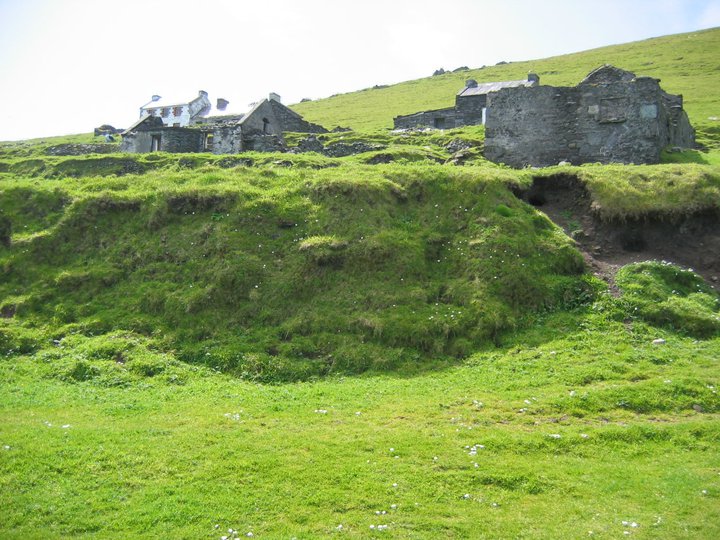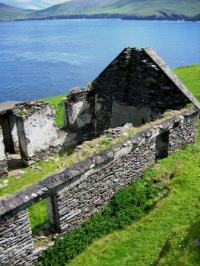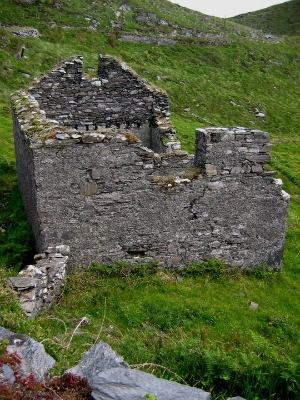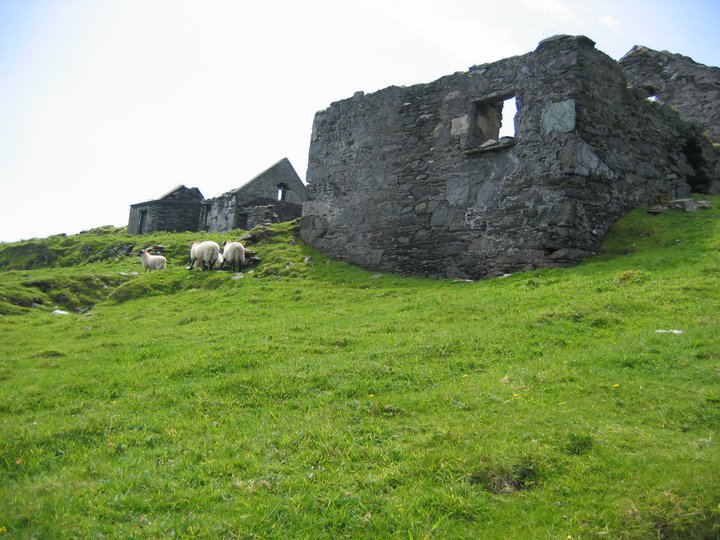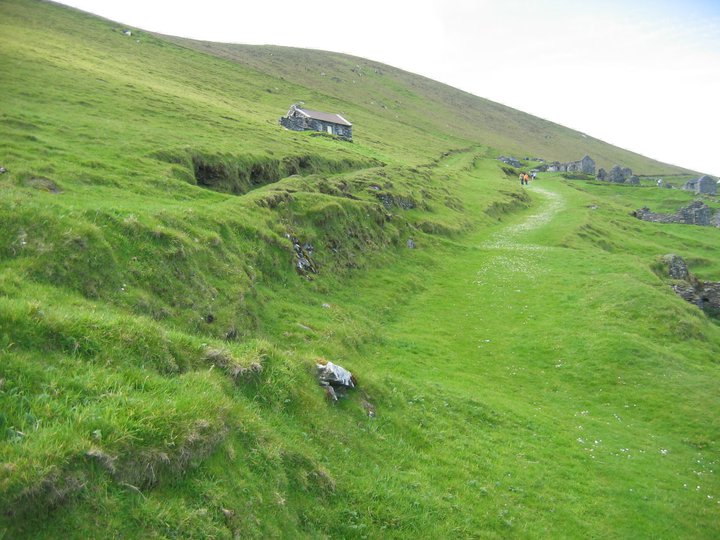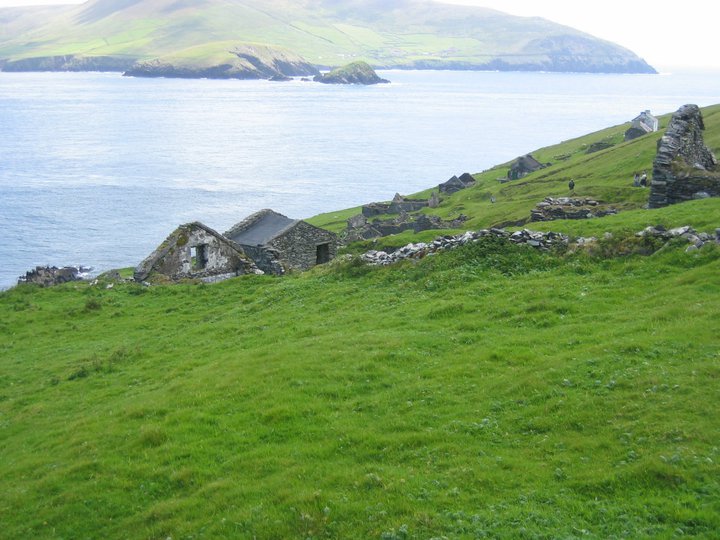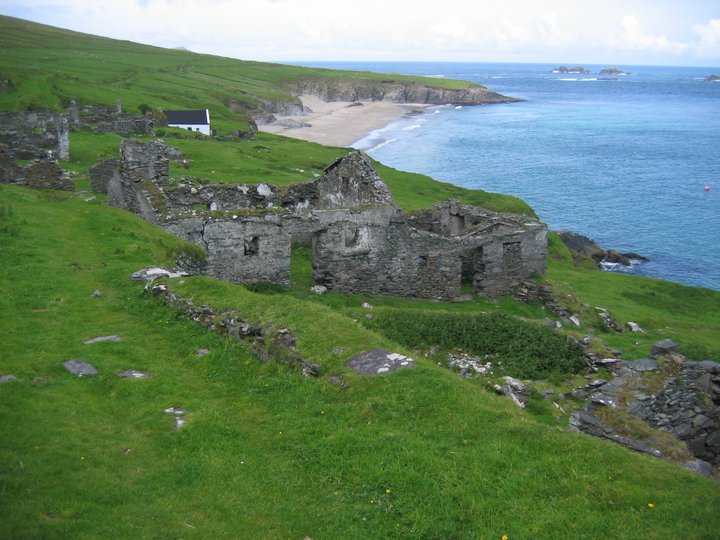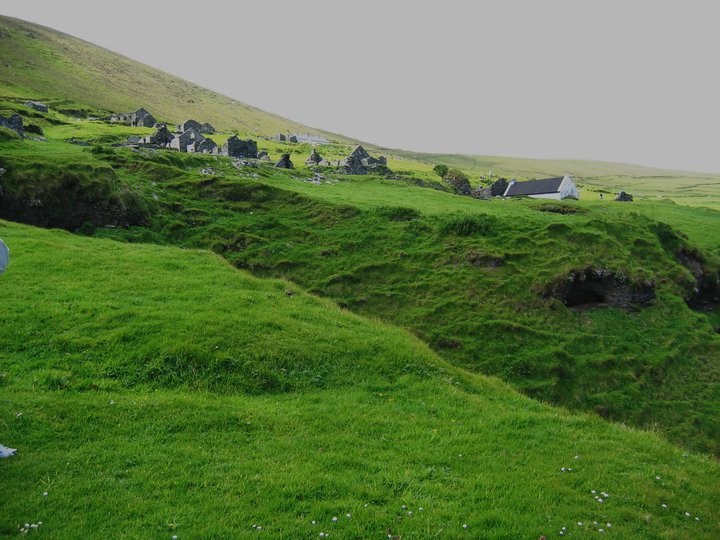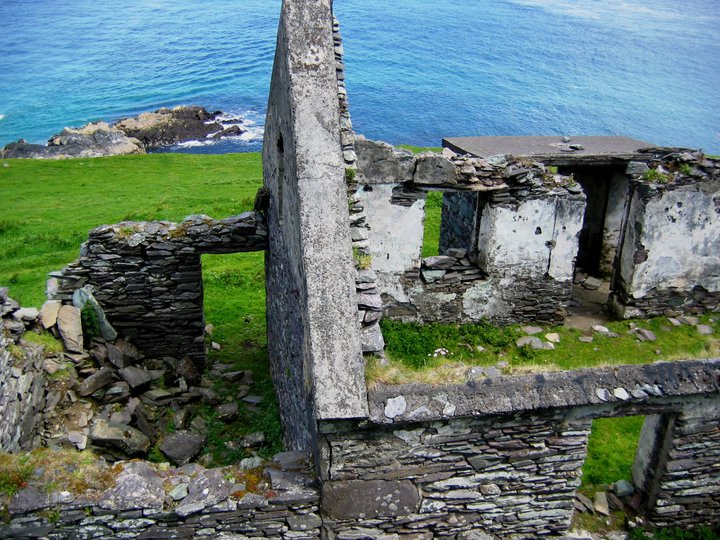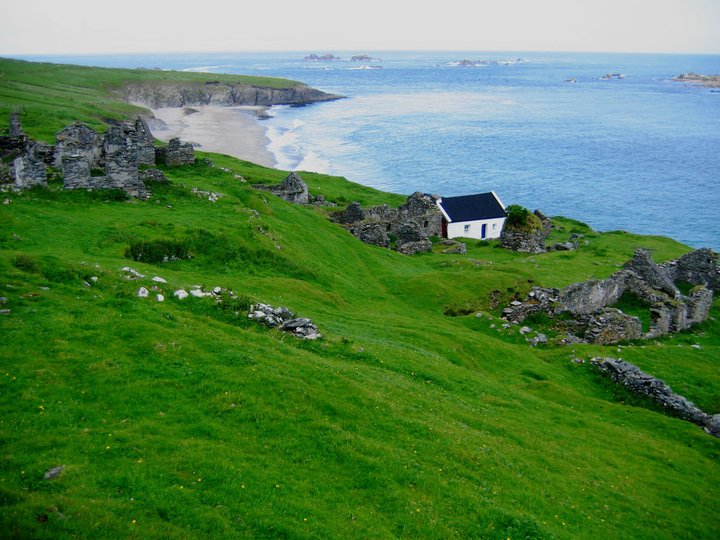Ireland
The land of my ancestors. It so happens that I am 100% Irish American. That comes with all the baggage you can imagine--moods, potential for addiction, love of stout, Catholicism, a propensity for playing sad songs (or as a member of the Irish band Solas once said, "We Irish love our uplifting songs of sorrow and despair."), and a constant pull back toward the motherland. This latter trait is a bit interesting, in that Irish-Americans tend to view the motherland more favorably than other immigrant groups to the Americas, yet they had the lowest return rate. Hmmm.
Anyway, I was able to have a memorable trip along the western coast in 2007. We were hoping to get back there this year, but due to my husband's current spinal issues, that is on hold. So, I go back to the old pictures and reminisce. I wrote this last year, about An Blasket Mor.
That's another Irish trait. We spend a lot, maybe too much time, reminiscing about things past. It's a profound, inherited preoccupation with loss. Here's a quote from Timothy Egan's Op-Ed in the NYT:
"To be Irish," said Sen. Daniel Patrick Moynihan, "is to know that in the end the world will break your heart"
Egan goes on to say, "And it's true that Irish history is an epic of misery and tragedy, interrupted only by occasional periods of joy. For almost 700 years, it was a crime to be Irish in Ireland." This history seems imbedded in our genes. Sorrow passed down through the generations.
On the other hand, we can be a blast at a party, go figure! There is no denying that light that can come on in most (we have our curmudgeons just like any group) Irish when they are around people.
Now, onto food to celebrate this Irish holiday!
First, I found this interesting, that corned beef is not the meal eaten by the Irish on St. Paddy's day. ????? Figures. Things don't always translate "across the pond". If you haven't already discovered farmette.ie, go there now!
I wrote this post last year. I was completely un-creative this year and sort of just tweaked last year's cupcakes by copying this from Smitten Kitchen (she's awesome, btw). Her use of a whiskey chocolate ganache filling is perfection, I think. My cupcakes are mini's. That allows me to eat just one (or two) with minimal guilt. These babies are rich. I added a tablespoon of finely ground dark chocolate espresso beans into the batter while mixing, as well as a sprinkling to the tops of each cupcake before baking. Also, I topped them with shaved dark chocolate curls and homemade whiskey coffee flavored sprinkles, which are surprisingly tasty. The sprinkle recipe is Michelle's at Hummingbird High. Instead of 3/4 tsp of vanilla extract, I used 1/4 tsp vanilla extract, 1/4 tsp whiskey, and 1/4 tsp coffee extract.
If you make these, make the sprinkles at least a day ahead of time, as they can take that long to dry. Also, you will need a surface large enough to place them while drying. My kitchen is ridiculously small, so these took up most of the space on our dining room table.
Honestly, nothing gives me a lift like making mini-cupcakes. They're cute and decorating them can be creative. Most of all, people love them. It's so fun to give them away to people who can enjoy them. Made my St. Paddy's Day a good one. Erin Go Bragh!


